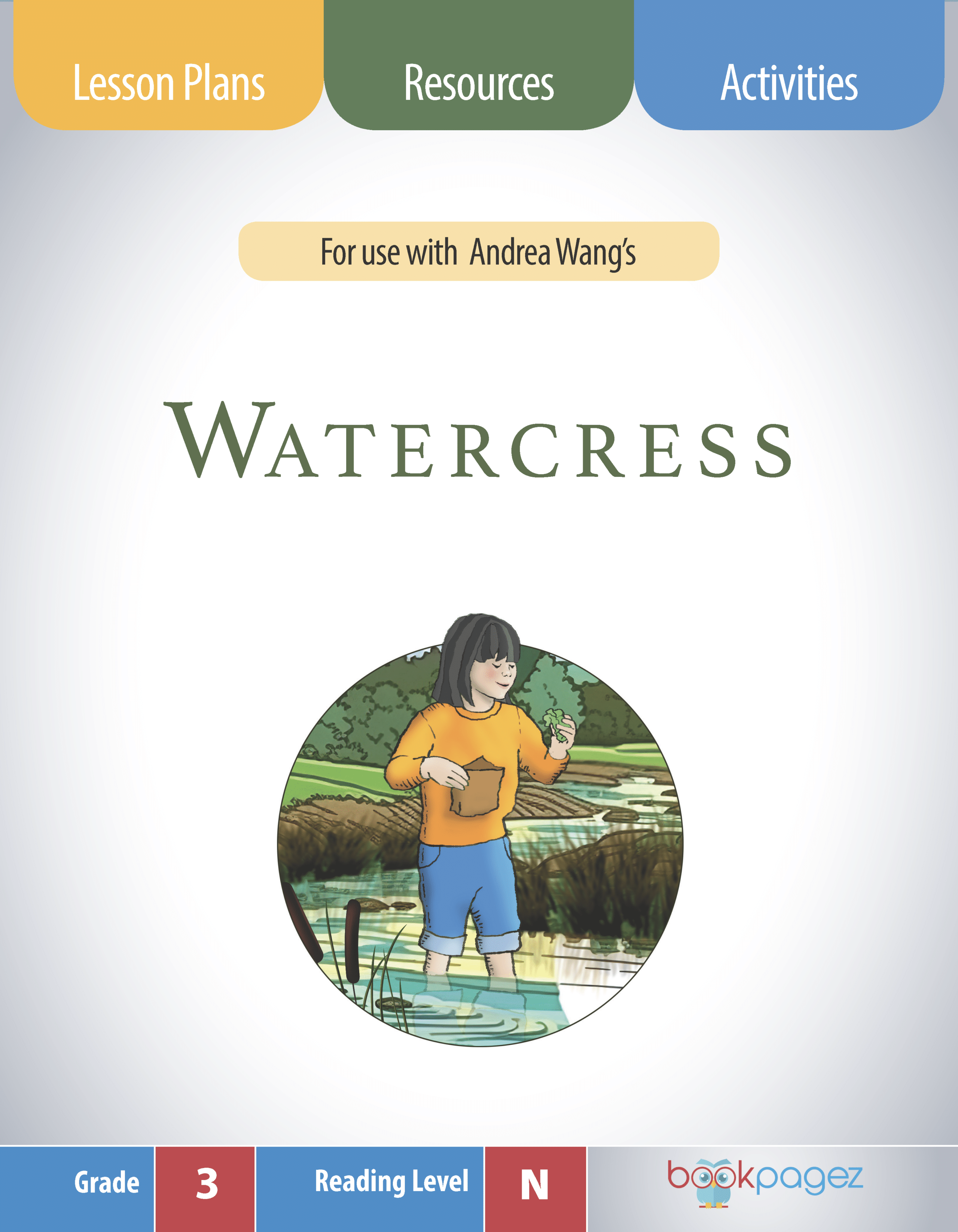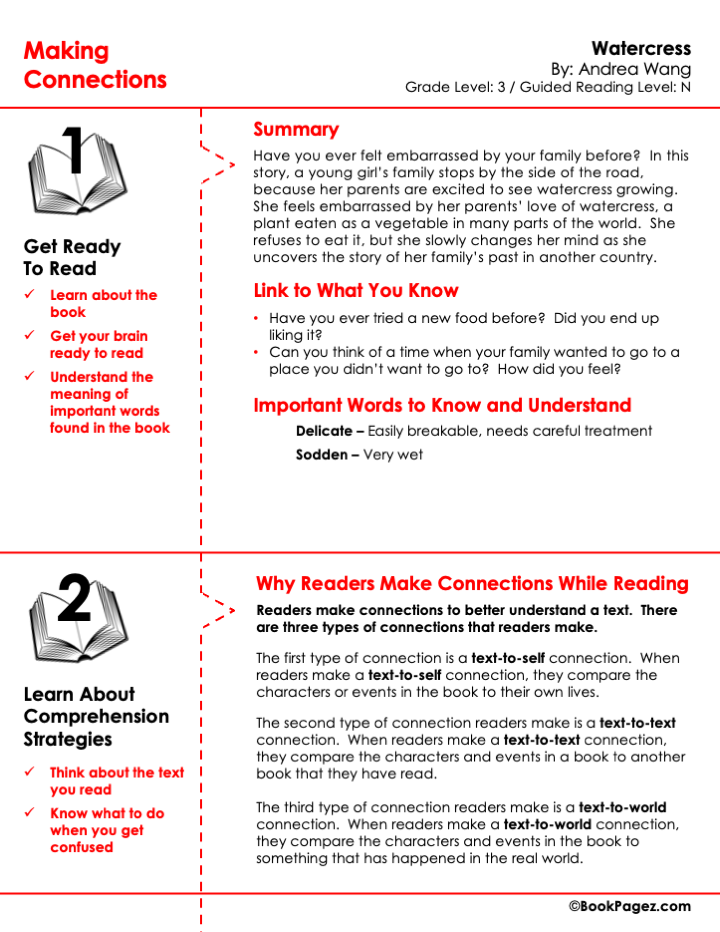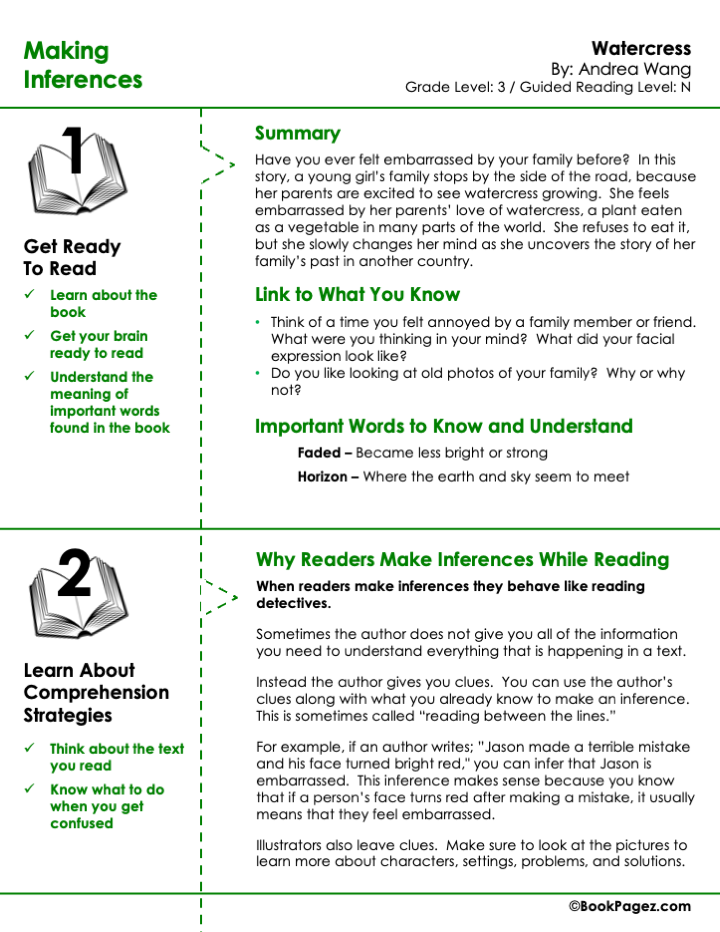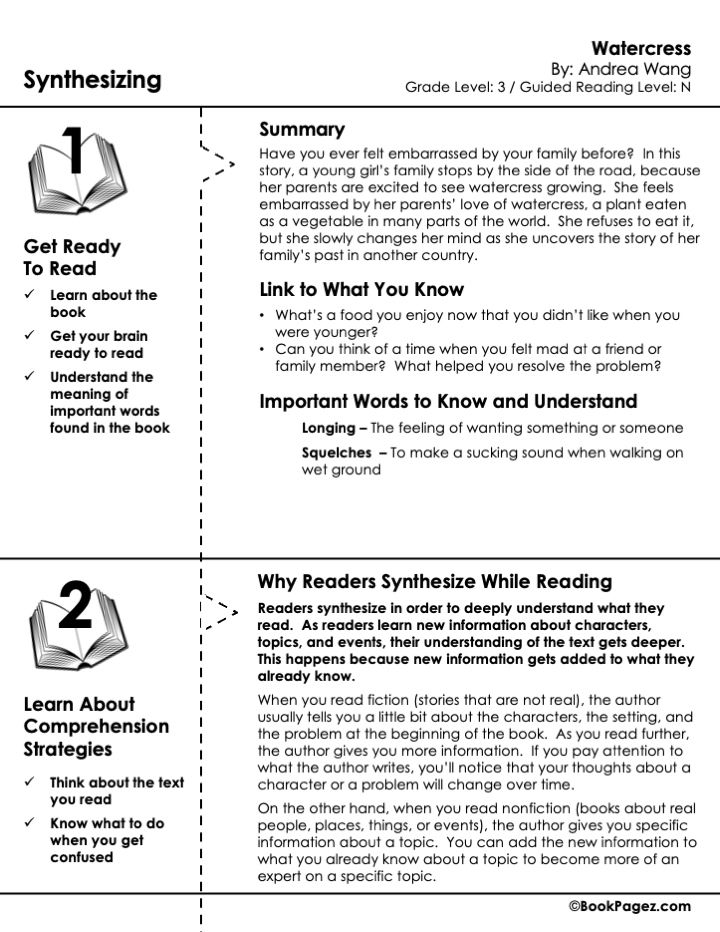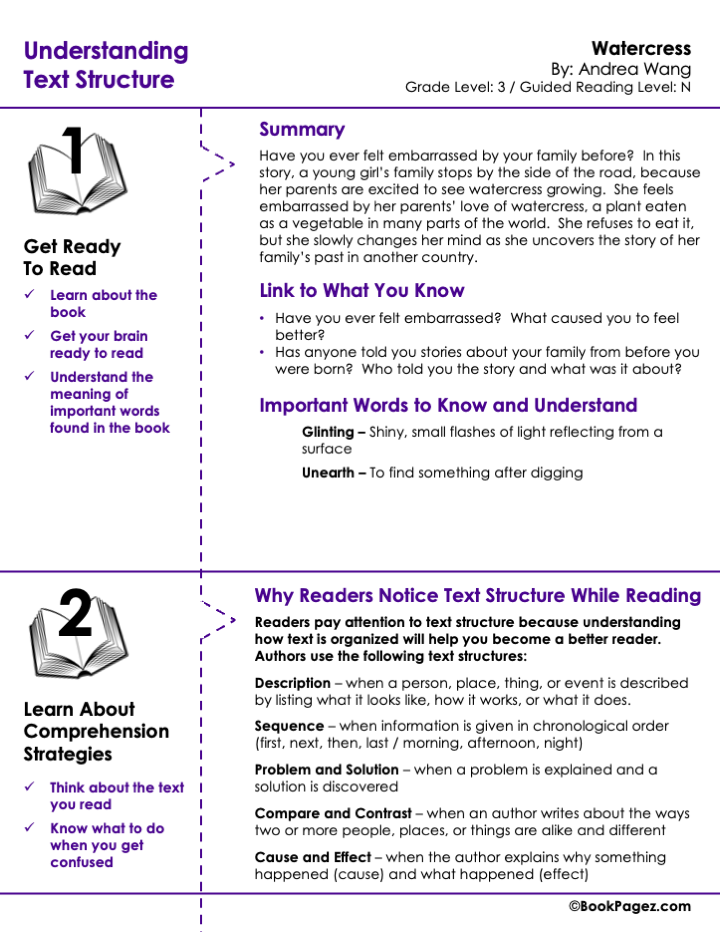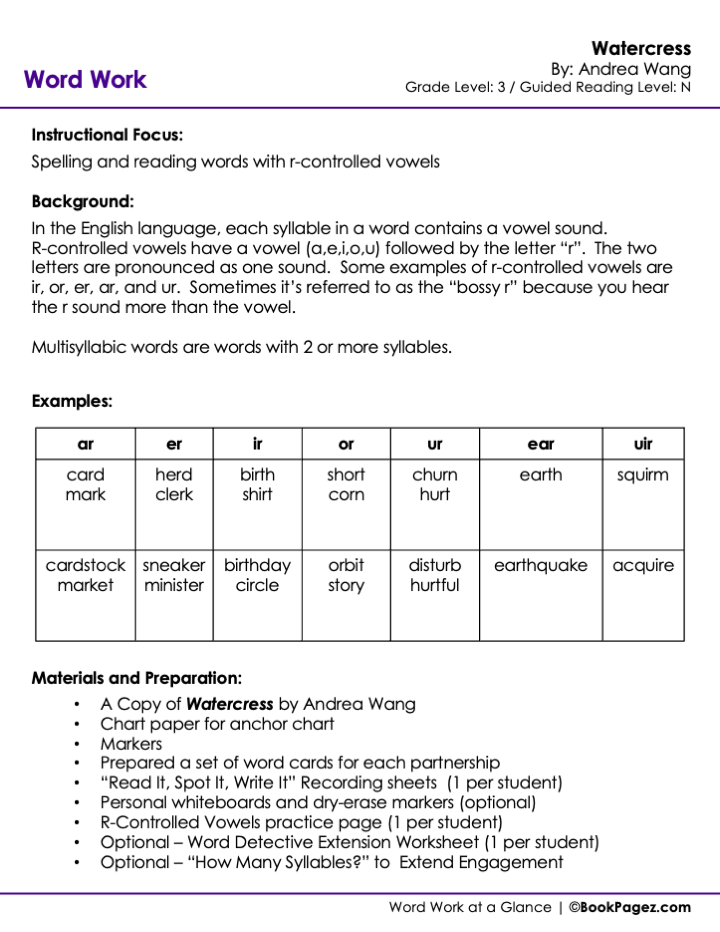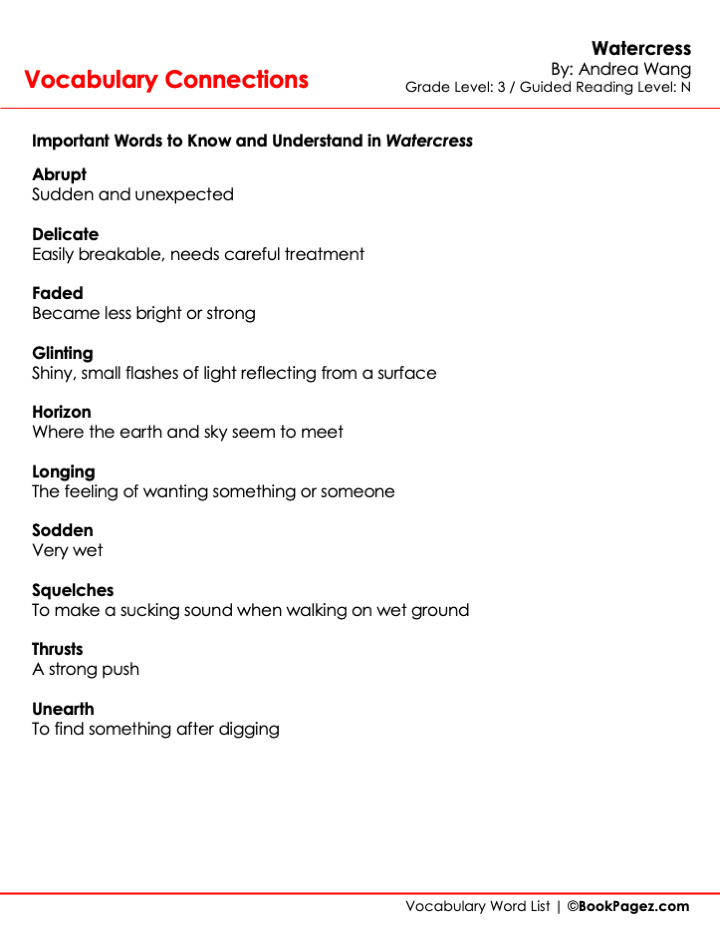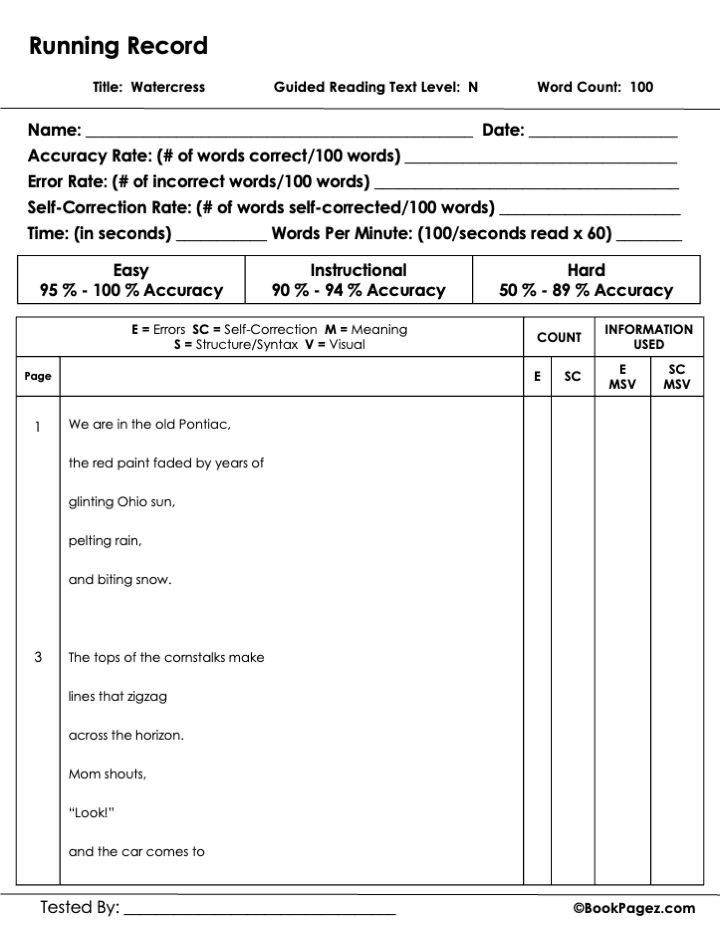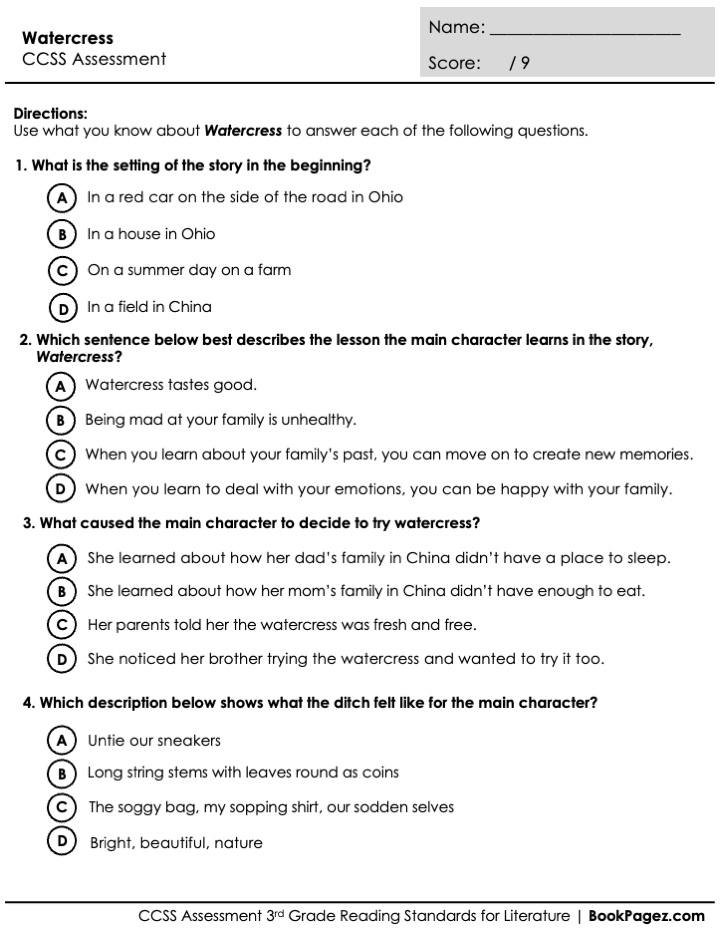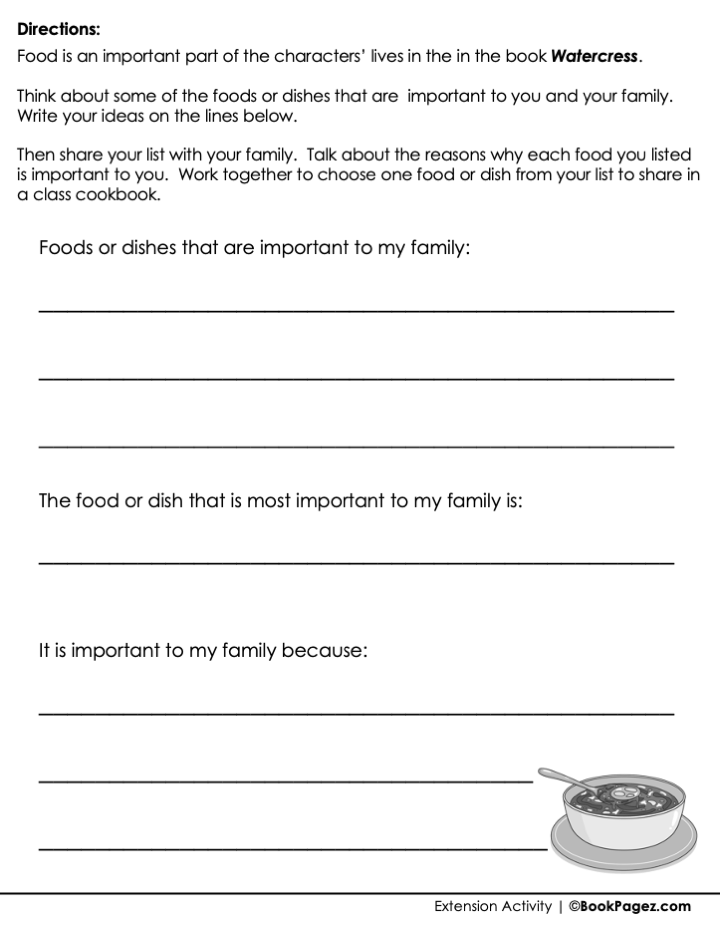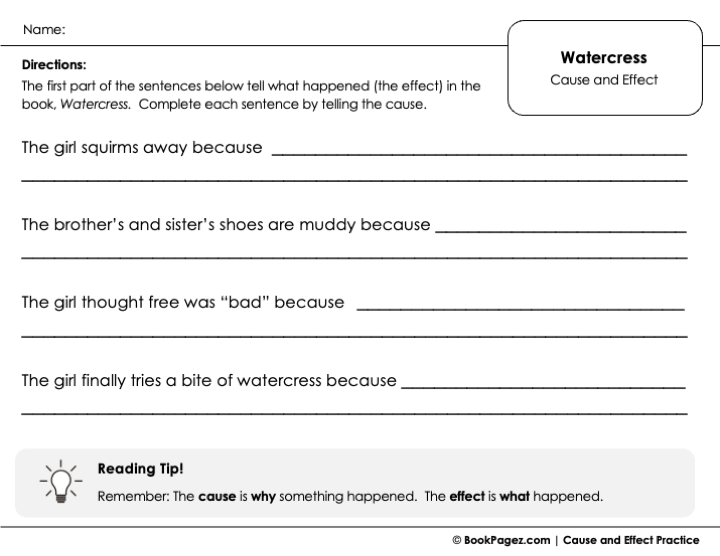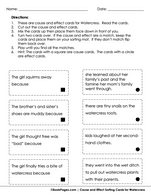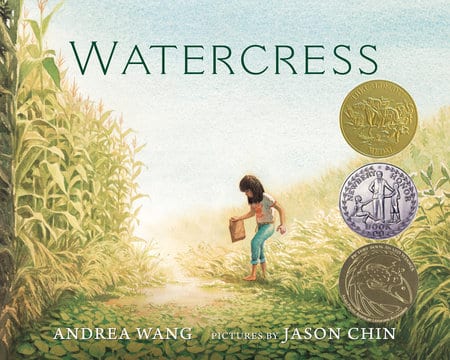Identifying the Author’s Purpose with Watercress
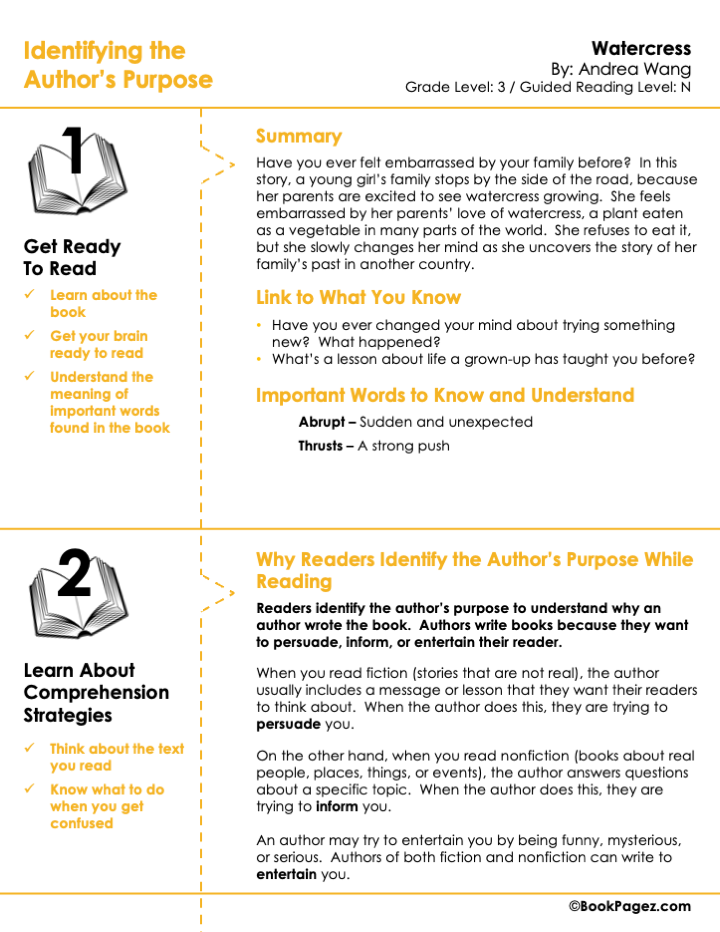
Identifying the Author’s Purpose with Watercress
In Watercress, the author, Andrea Wang, tells a seemingly simple story about a girl embarrassed by the food her family chooses to eat and embeds universal themes of intergenerational memories and the importance of family. Students will think deeply about the author's purpose in this lesson by noticing the descriptive language and specific details in the illustrations. They will also think about the characters' emotional journey and the larger message it conveys.

